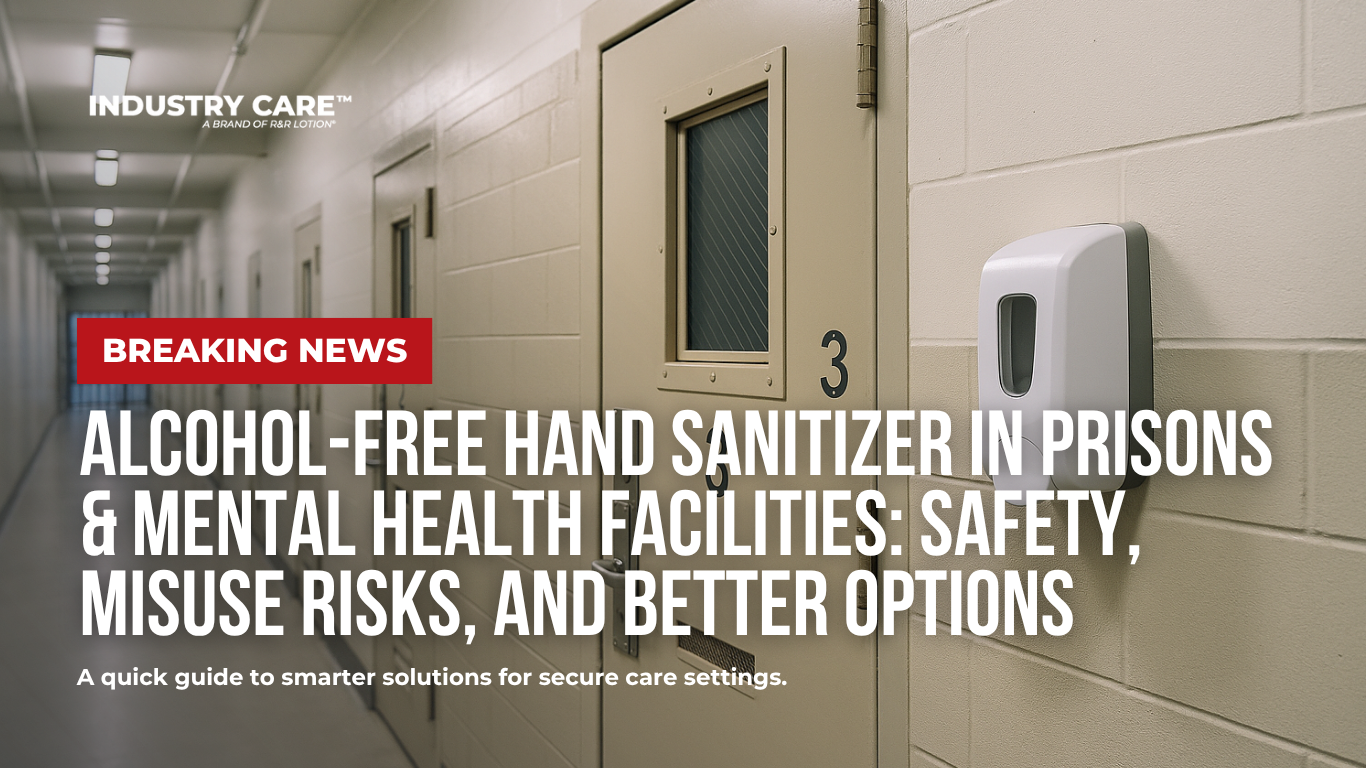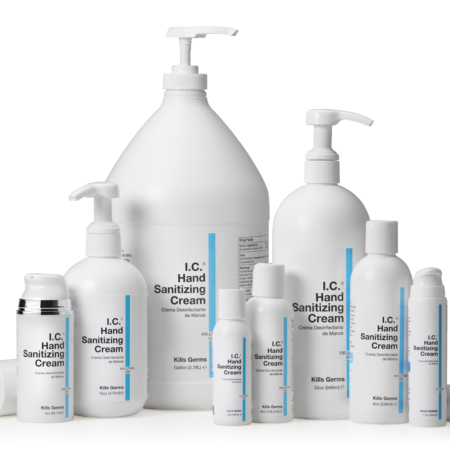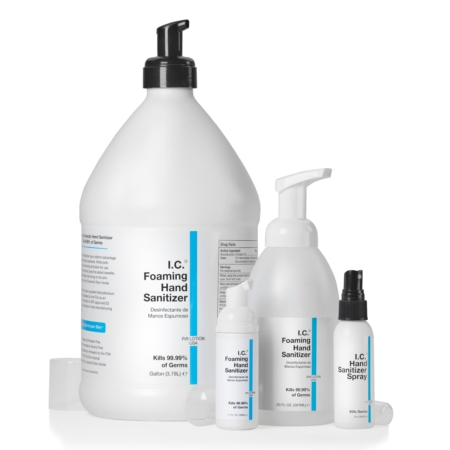Alcohol-Free Hand Sanitizer in Prisons & Mental Health Facilities: Safety, Misuse Risks, and Better Options
Alcohol-free hand sanitizer in prisons and mental health facilities is increasingly preferred because traditional alcohol-based hand rubs (ABHRs) introduce unique risks: ingestion or intoxication, flammability, and even contraband concerns from metal pump parts. This article explains how and why ABHRs can be misused in carceral and behavioral health environments, what “denatured alcohol” means (and why it’s still flammable and toxic), and how switching to alcohol-free options—like I.C. Sanitizing Cream and I.C. Foaming Hand Sanitizer—simplifies policy, safety, and compliance.>
Key Risks with Alcohol-Based Sanitizers in Secure Settings
- Ingestion/intoxication: Residents may drink ABHR for alcohol content, causing severe illness.
- Flammability: High-alcohol products carry ignition and fire-spread risks.
- Contraband: Dispenser hardware (e.g., metal springs) can be removed and repurposed as contraband components.
- Policy burden: Additional controls, storage, and monitoring increase staff workload.
Why ABHRs Get Misused: Ingestion Risks in Prisons & Psychiatric Units
In secure environments, the ready availability of alcohol-based sanitizer can lead to intentional ingestion by persons seeking intoxication. Case reports from psychiatric units and carceral settings have documented severe outcomes after drinking ABHR (ethanol or isopropanol), including respiratory failure and ICU care. Facilities often classify ABHR as contraband or tightly control access to prevent diversion.
What Is Denatured Alcohol—and Why It’s Still Dangerous
“Denatured alcohol” is ethanol made undrinkable by adding toxic or bittering agents (e.g., methanol, denatonium). While the additives discourage consumption, the base liquid remains highly flammable, and some denaturants are poisonous. In other words, denaturing does not remove the core fire hazard or the risk of serious toxicity if consumed.
Flammability & Fire-Safety Concerns in Closed Environments
ABHRs can emit ignitable vapors; spills or pools may ignite, and vapors can flash back to ignition sources. In housing units, day rooms, or treatment spaces with dense populations and limited egress, a small fire can escalate quickly. Alcohol-free options eliminate the high-alcohol fuel load and reduce the need for strict storage and placement controls.
Other Misuse Vectors: Gel Extraction, Aerosolization & Eyes/Lungs
Misuse can extend beyond drinking. ABHR gels can be squeezed out and concentrated; vapors can be deliberately inhaled; and accidental splashes cause eye injuries. In correctional settings, even “everyday” items can be repurposed in harmful ways, which is why minimizing opportunities for misuse matters.
Contraband Concerns: Pumps & Metal Springs
Wall or bottle pumps often contain small metal springs and components. In secure settings, removable metal parts can be fashioned into contraband (e.g., weapon components) or used to tamper with facility hardware. Choosing packaging and dispensing systems without accessible metal parts—and favoring alcohol-free hand sanitizer in prisons to remove the intoxicant—reduces both motivation and means for misuse.
Why Alcohol-Free Products Fit Secure Settings
| Challenge with ABHR | How Alcohol-Free Helps |
|---|---|
| Ingestion/intoxication potential | No ethanol/isopropanol content to drink or inhale for a “high.” |
| Fire/ignition risks and storage controls | Not handled as a flammable liquid; simpler storage and placement. |
| Hardware repurposed as contraband | Use pump-free formats or non-metal components to reduce risk. |
| Staff workload managing contraband and spills | Fewer incidents and investigations; easier routine hygiene access. |
Product Options Built for Secure & Behavioral Health Environments
- I.C. Sanitizing Cream (Alcohol-Free) — Cream format supports thorough coverage without flammable solvents; ideal where ingestion and fire risks must be minimized.
- I.C. Foaming Hand Sanitizer (Alcohol-Free) — Fast, residue-light foam optimized for high-traffic areas; no high-proof alcohol to misuse and compatible with pump-free or secured dispensing.
Deploy Alcohol-Free Hand Sanitizer in Prisons & Behavioral Health Units
Standardize on alcohol-free formats to reduce intoxication attempts, cut fire risk, and minimize contraband vectors—while maintaining strong hand hygiene access for residents and staff. Our team can help you choose packaging and mounts that minimize removable metal hardware.
Note: Policies vary by jurisdiction. Consult your security team and Authority Having Jurisdiction for requirements on sanitizer access, storage, and dispenser design in your facility type.
Sources
- ABHR ingestion/misuse in psych units and prisons (case reports & articles). Mental Health Clinician+2Mayo Clinic Proceedings+2
- Correctional IPC guidance noting ABHS may be restricted due to fire/consumption risk. CDC+1
- Denatured alcohol: definition, toxicity, additives; flammability/fire behavior. Wikipedia+1
- ABHR fire-safety concerns (ignitable vapor). CDC+1
- Contraband prevalence & improvised weapons context in correctional settings. National Institute of Justice+2United States Sentencing Commission+2
Shop Now









